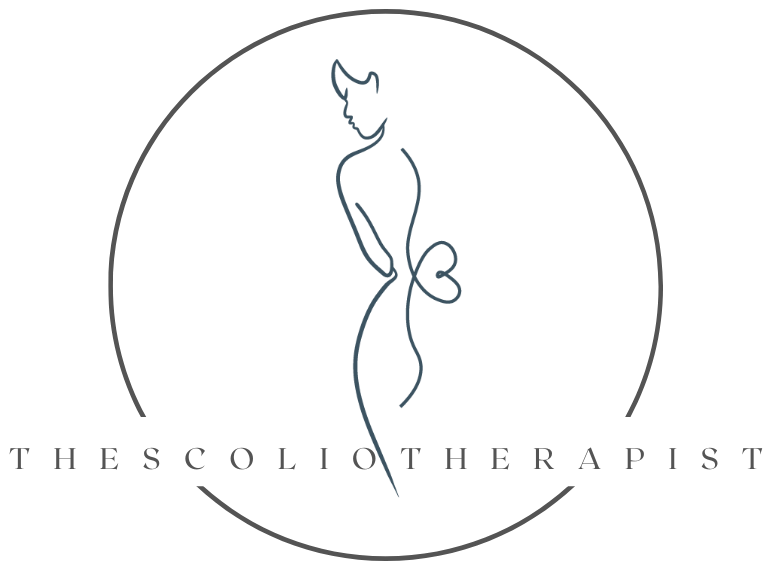Understanding and Correcting Your Scoliosis Hip Glide
What’s a hip glide? Is it something that every scoliosis patient has? Is it possible to correct a scoliosis hip glide?
These are questions I hear a lot from my clients (and therapists/trainers who work with scoliosis patients). In a nutshell, a hip glide is simply a misalignment of the hips — one hip pushes out to the side more than the other.
Many scoliosis patients have hip glides due to the curvature of their spine. But it’s possible to correct a hip glide through targeted exercises and other treatments.
The Aesthetics of a Scoliosis Hip Glide
Many of my patients primarily notice their hip glides when they’re looking in the mirror. They may see more of a “shelf” on one side of their body compared to the other. Others describe it as a “love handle,” but in this case, it’s caused by the spinal curve, not body fat.
Scoliosis Curve Types
There are three main “curve categories” that experts use when discussing scoliosis hip glides:
Balanced curve: no visible misalignment
Right hip glide: hips pushed out toward the right-hand side
Left hip glide: hips pushed out toward the left-hand side
Many scoliosis treatments, like corrective exercises and Pilates, are designed to help the patient move toward a balanced curve. It’s a neutral position that doesn’t cause a visible hip glide.
Hip Glides = Spinal Compensation
Essentially, hip glides occur when the body is trying to compensate for the spine’s curve. The type of hip glide depends on your spine’s largest prominence.
For example, if your largest prominence is on the right side of your body, it’s pulling your torso in that direction (over the right leg). To maintain balance, your body compensates by pushing your hips out to the left. So a right-side prominence results in a left-hand hip glide.
In most cases, a hip glide occurs on the opposite side of the largest prominence. However, there are always exceptions to the rule.
Correcting a Hip Glide When Standing
The first step toward correcting your hip glide is to understand it. Once you know why your hip glide is there, you can figure out how to position your body in a better, more balanced way.
Start by trying to balance the weight in your feet. To do that, you need to know how your weight is unevenly distributed. It’s best to use a mirror or a picture to see how you’re positioning yourself.
Most scoliosis patients (myself included) find it difficult to have internal awareness of their body’s positioning. Because of that, it’s easy to incorrectly assess your weight distribution. You might feel like your weight is equally distributed between your feet or that you have more weight on the side of your hip glide. In reality, the opposite is almost always true — most patients put more weight on the side of their largest prominence (opposite their hip glide).
Redistribute your weight by shifting side to side and front to back on your feet. Then, reposition yourself to put more weight toward the side of your hip glide, pulling your body away from the side of your largest prominence. You may start by “overcorrecting” toward the side of your hip glide, but as you continue to practice, you’ll move toward a balanced midline alignment.
Correcting a Hip Glide When Sitting
The process is very similar to correcting your hip glide when sitting. Start by making sure you have both feet flat on the floor. Your tendency when sitting is the same as when standing — most likely, you’ll be leaning in the direction of your largest curve. So the solution is to bring your ribs and shoulders to the other side (the side of your hip glide) and “press down” slightly down into the seat.
While you can correct a sitting hip glide by propping a pillow or wedge under the “lower” hip, I usually recommend against this. I find that it’s better for most patients to take a more active role in repositioning themselves rather than doing it passively with a prop.
Corrective Exercises for Hip Glide
There are several corrective exercises you can do to correct your hip glide. The idea is to counteract the way your hip glide has positioned your muscles.
For example, if you have a right hip glide, the muscles that line the right side of your hips are elongated and unable to contract very well. The muscles on the left side of your hips are overly shortened, which also prevents proper contraction because there isn’t much room for them to move.
Side-lying exercises are very good for hip glide correction. In this example, if you were lying on your left side to work on your right hip, you would work on shortening and contracting those muscles. So you might prop your leg on a pillow or stool before doing leg-lift exercises.
When you switch to work on the left side, you would focus on releasing these overly tight muscles before starting on strength work. Mobility exercises are good to elongate those shortened muscles. You can also use Franklin balls (or lacrosse balls) for targeted soft-tissue massage.
Identifying and Correcting Your Hip Glide
Hip glides are common among scoliosis patients, but they are treatable. If you have a hip glide, it’s important to understand why it’s happening. Once you know that, you can figure out which corrective exercises would bring your body into better alignment.
If you enjoyed this episode, please leave a rating and make sure you’re subscribed to the podcast to get every episode when it airs.
